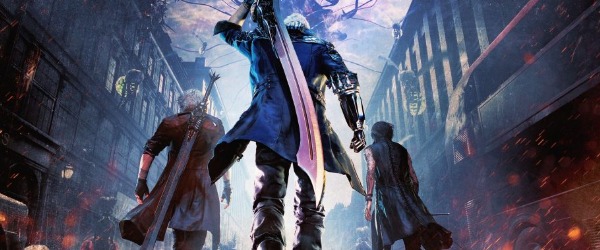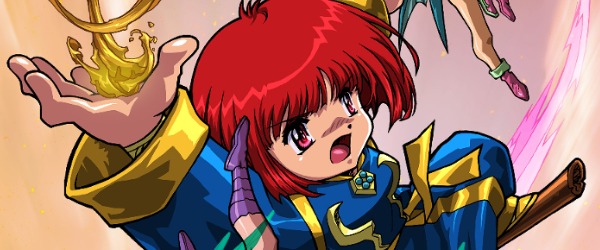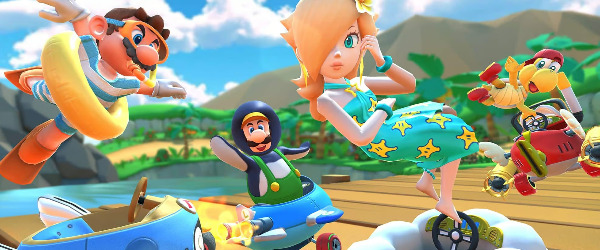
The Days of Standard Texturing Are Numbered - Article
by Mikara Nakamura , posted on 01 June 2015 / 9,473 ViewsFrom the early days of 3D use in games, developers the world over have almost unanimously defaulted to dressing 3D objects in 2D texture data; a labor-intensive process that translates to heavy resource usage on games consoles and large portions of disk space both on optical media and installed to a system's internal memory. In this article I'm going to give you a sneaky peek at how this will all change in future games.
This long-standing tradition is on the brink of change. As hardware has advanced, the engines which run on it has done so in tandem, giving birth to new technologies and features in new engines and graphics API. One of the newest developments has been physically-based shaders, which have lent a hand in creating some stunningly realistic visuals on systems such as Epic Games' Unreal Engine.

A step into the future of physically based shading however yields even more exciting and impactful developments for games of the future, a topic rarely even considered by the average gamer and one still in the midst of development.
Allegorithmic is currently on the forefront of pushing PBR (physically based rendering) to expand the possibilities of current and future rendering engines, which offers a fascinating glimpse into the future of game production. Where currently thousands of hours and millions of dollars are needed to generate fixed texture data and shader design for a single title, in the future it will be possible to reduce that time and cost requirement considerably while at the same time creating environments and objects that can be dynamically adjusted, affected, and in the case of persistent worlds, actually age.

How does it even work?
To simplify things considerably, in place of textures a game will use a pre-selected collection of vector based texture and finish data, and a collection of materials. Unlike standard materials shaders, these materials possess variables which are modular and can "plug in" to one another to affect each other in turn.
The data is then painted on to 3D objects rather than wrapped in a 2D UVW as in traditional 3D texturing. When painted on the layer order, material selection and any other user-defined information for that model is stored in the model's "graphics container".
When a model is added to the world the content of the graphics container is used by the engine to render out the model correctly, as per the designer's original configuration.

What's the difference?
Where PBR and vector based assets differ is in the lack of conventional 2D data. Instead of that 2D data, the artwork on an object is generated from vector based art, shader based materials, and adjustable data formula. To explain this better, if you had a steel box in a conventional game, you would have - at a minimum - a texture wrapped around the object, with some waste in the texture and lightmap images. In order to weather this material you would then need a weathered version of the same texture and engine capability to fade between the two, which most of the time would require both versions of the texture data in memory. If you are using lightmaps, normals, specular, displacement, and so on, the process becomes even more wasteful.
However, with PBR with vectors, a portion of the memory is always used for the vector data. The object then calls to use some of these textures with color, position, and any user defined attributes. Weathering is handled then by adjustments to the user defined attributes.
In the creation of the original box, you could apply a metallic material then paint on a second layer. A pre-configured "paint wear" process in vector format would be available to the user via a simple slider, with one end of the scale being a perfect, flawless painted cube and the other completely worn off paint. The same goes for the original metallic material - one end is flawless, clean metal, the other completely rusted. Both sliders are accessible to the artist but, at the same time, both sliders' data is accessible to the engine.
This is beneficial in two ways. Firstly, it makes it possible to hook in to the paint wear value and increase it in increments relative to the damage value inflicted upon the object. At the same time weather effects such as rain and snow can hook in to the metal material's slider and dynamically rust the object over time.

Faster production, better visuals
Because weathering, fluid dynamics, and physics-based tools that each adjust materials and properties of each layer are accessible to the artists when creating objects, it’s possible to realistically weather and damage objects based on their correct physical form, taking into account the weight, resistance, strength, and rigidity information of a constructed model. Since the data used is part digital value and part vector based brush, the completed object has no actual “art resolution”, and can be zoomed in to infinitely without loss in clarity.
For drawing onto objects for a more personal touch or for better customization, vector based assets can be used which both use up less memory and have the added advantage of retaining the ability to zoom with no loss of clarity. Theoretically, with decent hardware, only mesh LODS would then be needed as you would no longer need to stream in varying quality art assets, reducing the read/write required during gameplay and minimizing cycles lost to moving blocks of data from vram to accommodate the scene.
With this approach you are left with three primary supporting elements: antialiasing, anisotropic filtering, and render resolution, all of which on good hardware should not be a major concern.
While we may see elements of these new technologies creep in over this generation, it’s unlikely that they will be explored to their full potential within the next few years. It is, however, reassuring that there will be a viable means of overcoming the ever-escalating cost and manpower demand of today's AAA titles.
To see how these technologies will be impacting games over the next few years, you can check out this demonstration of the Substance plugin for Unreal Engine.
More Articles
Great piece! Keep it up!
Thanks for such an interesting glimpse on the future of graphics in games. Usually it's all about how Ray Tracing will change everything.
So in near future we will have ray Tracing and Vector based texture tech, cool. When i thought we already in the edge but it seems technology keep expanding it self
VGC just got even better. Nice article, Mikara.
I had no idea about this - thanks for interesting article Tachi.
Q: Sometime in the future, when hardware is good enough, could this be used on fully voxel based engines?
That basically means that vector graphics will ne used instead of textures. Those are far more flexible ans devs will have to make less assets. One benefit will ne those never get pixelated.
Modern browser text is vector based. That was you Can zoom in ans out without letters getting pixelated. And you dont need to have different fonts as a predefined image.
Now, that usually is 2D vector graphics. PBR can do a lot more.
Awesome piece
Great article! Looking forward to the future.
Is it only Unreal 4, or it's already been implemented on other engine such as Frost Bite 3? I thought they already implemented this technology back then, it's kind of funny with old technology they have to create multiple asset for one texture. But now vector based texture will be quite useful and i hope with GPGPU tech will benefit most.
This was a very good and interesting article. Keep it up!
What a lovely article.
Very cool. I understood almost everything here. This is promising and maybe It'll be mainstream soon...I hope. Great Article.
Well they are being used to the full on the PC (many games now have PBR and upping to 8k x 8k textures) and it only takes a £200 gpu to run that at ~60fps at 1080p. I hope the consoles don't hold back the potential yet again as these new techniques do make games quicker/cheaper to produce.
Wow great job! I thought it was going to be another thread but this is even better!






















